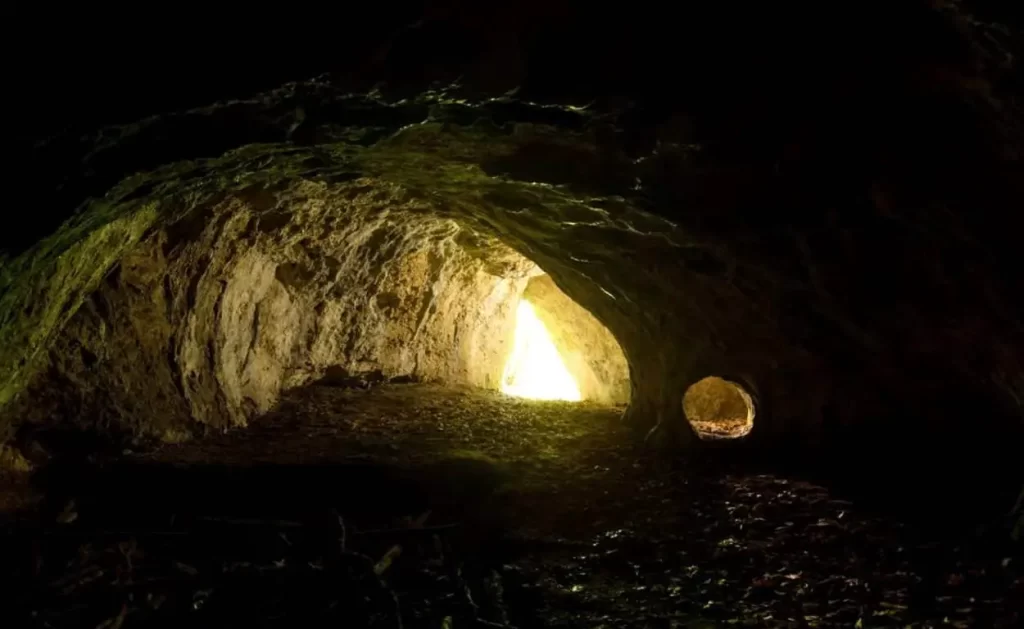Flint tools discovered over 50 years ago in the Tunel Wielki cave have now been determined to be approximately half a million years old, making them some of the oldest known artifacts in Poland. Originally thought to date back around 40,000 years, these tools have been reassessed through new research conducted by Dr. Małgorzata Kot from the Faculty of Archaeology at the University of Warsaw, shedding new light on early human activity in the region.

The revised dating process was initiated following observations by Dr. Claudio Berto, who noted that small animal remains found within the same cave layer appeared to be far older than previously assumed. Upon further analysis, researchers determined that some of these remains could be as old as 500,000 years.
Among the discovered bones were those of extinct species that once roamed the area, including ancient relatives of today’s rodents, Mosbachean wolves, lycaons, an ancestor of the cave bear, and a type of felid cave lion. These species, now long gone from present-day Poland, are estimated to have lived in the region between 450,000 and 550,000 years ago.
Excavations of the same layer that contained these fossils also revealed 40 flint relics. Most of these are by-products of tool production, but the collection includes several flint scrapers and small flint knives, indicative of human tool-making activity in the cave.
“Since these artifacts originate from the same layer as the bones, their age is likely very similar,” explained Dr. Kot. “This assumption was further validated by re-excavation work conducted in 2018, which confirmed the stratigraphy described by archaeologists over 50 years ago. During these recent excavations, we uncovered additional post-production waste and more animal bones.”
While the animal bones exhibit no clear signs of cutting or butchering, researchers believe that the cave was periodically inhabited by humans, who used it temporarily between times when wild animals occupied it. This interpretation suggests that the cave served as a shelter for early humans but was not continuously inhabited.
The tools were likely crafted by Homo heidelbergensis, an extinct species or subspecies of archaic human that lived during the Middle Pleistocene. This species is considered a crucial link in human evolutionary history, potentially giving rise to both Neanderthals in Europe and modern humans in Africa. The discovery of tools from this period is exceptionally rare in Poland, with only a handful of similar finds, including some uncovered in a cave in Małopolska, Lesser Poland.
The identification of these ancient tools significantly alters our understanding of early human presence in Poland. Previously, most known evidence of prehistoric human activity in the region was dated to the Upper Paleolithic, around 40,000 years ago, when early modern humans (Homo sapiens) spread across Europe. However, the Tunel Wielki cave findings suggest that archaic humans had already been present in the area hundreds of thousands of years earlier, demonstrating a much deeper timeline of human activity.
The site of Tunel Wielki cave has been a subject of archaeological interest since its initial excavation more than half a century ago. Located in southern Poland, the cave is known for its complex stratigraphy, which preserves evidence of various periods of occupation by both humans and animals. The flint artifacts discovered there offer an invaluable glimpse into the technological abilities of early human ancestors, revealing insights into their tool-making techniques and survival strategies.
Homo heidelbergensis, the likely makers of these tools, were skilled hunters and toolmakers known to have lived across Europe, Africa, and possibly Asia. They crafted stone tools primarily for cutting and scraping, activities associated with hunting and food preparation. Although they were not the first hominins to make tools—stone tool use dates back at least 2.6 million years—Homo heidelbergensis represents a significant step forward in the refinement of tool production, as they developed more specialized implements suited to their needs.
Archaeologists continue to debate the extent of their cognitive abilities, but it is widely believed that Homo heidelbergensis exhibited complex behaviors such as cooperative hunting and possibly even rudimentary forms of communication. Their presence in what is now Poland suggests that they were capable of adapting to a wide range of environments, from warmer interglacial periods to the harsh conditions of Ice Age Europe.
While the flint tools themselves do not provide direct evidence of how these early humans lived, their discovery alongside ancient animal remains supports the idea that they were part of a broader ecosystem, coexisting with large predators and prey animals. The presence of flint knives and scrapers suggests that they may have processed animal hides and butchered meat, although the lack of cut marks on the bones leaves some questions unanswered.
Further research will be necessary to refine the dating of the artifacts and to better understand the behaviors of the hominins who created them. The findings at Tunel Wielki cave emphasize the importance of revisiting past archaeological discoveries with modern analytical techniques. In recent years, advances in dating methods, such as optically stimulated luminescence (OSL) and uranium-series dating, have helped scientists more accurately determine the ages of ancient artifacts and fossils, sometimes leading to groundbreaking revisions of historical timelines.
The discovery also highlights the importance of Poland’s archaeological record in shaping our understanding of early human migration and adaptation in Europe. While sites in Western Europe, such as Atapuerca in Spain and Boxgrove in England, have long been recognized for their evidence of early human activity, Poland is emerging as an equally important location for studying prehistoric populations.
As new excavation techniques and dating technologies continue to improve, archaeologists anticipate that further discoveries in Poland and across Eastern Europe will reveal even more about early human history in the region. The Tunel Wielki cave findings serve as a reminder that history is always evolving, and what we believe to be true today may change with new evidence.
For now, the flint tools of Tunel Wielki stand as a testament to the resilience and ingenuity of early humans who inhabited Europe half a million years ago. Their presence in Poland expands our understanding of prehistoric life and opens new avenues for future archaeological exploration.
(Article header image credit: Miron Bogacki)





